- Home
- Alison Weir
Queens of the Conquest: England’s Medieval Queens Page 2
Queens of the Conquest: England’s Medieval Queens Read online
Page 2
The saga of England’s medieval queens is vivid and stirring, packed with tragedy, high drama and even comedy. It is a chronicle of love, passion, intrigue, murder, war, treason, betrayal and sorrow, peopled by a cast of heroines, villains, Amazons, stateswomen, adulteresses and lovers. Much, of course, is obscured by time and a paucity of detail—and yet enough survives to reconstruct a dramatic tale. My aim in this book is to piece together the fragments, strip away centuries of romantic mythology and legends that obscure the truth about these queens, and delve beyond the medieval prejudice, credulity and superstition in contemporary sources to achieve a more balanced and authentic view.
Since Agnes Strickland published her groundbreaking, but now hopelessly outdated, subjective and romanticized Lives of the Queens of England in the 1840s, there have been some notable single biographies and some popular composite ones. In recent years, there has been increasing academic interest in medieval queenship that has allowed it to be assessed in a much broader context.
This book is not an academic history, although it is informed by many academic sources. It is a narrative account of a turbulent period, written to appeal to anyone who loves history, and based largely on primary records. Popular historians all the way back to Strickland have been accused of emotionalizing history, but I strongly feel that, while an objective view is essential, no history would be complete without some comprehension of the emotional realities of the subjects’ lives, and I have tried to offer that here, where the evidence allows.
Much of my research on England’s medieval queens was undertaken over a number of years; it was based on a vast number of sources and covered twenty lives in depth, and for some time I have been keen to write up this huge mass of material. There is so much of it that this is actually the first of four volumes telling a story that spans the centuries from the Norman Conquest of 1066, when Matilda of Flanders presented her husband, Duke William, with his flagship, the Mora; to the mysterious death of Richard III’s queen, Anne Neville, in 1485. My aim has been to offer intimate insights into how queens lived and how they exercised power and influence in what was very much a brutal man’s world. Many of their lives overlap, and therefore, far from writing separate biographies of each, I have interwoven their stories to craft a seamless royal saga, which also offers an overarching view of the nature and development of English medieval queenship and a sweeping panorama of five hundred years of British history. Eleanor of Aquitaine and Isabella of France are not included: I have already published biographies of them, which will slot into sequence in this series.
This first book in the series focuses on the consorts of the Norman kings of England. Four of them were called Matilda (or Mathilde, Mahaut, Mald or Maud—the names were interchangeable, while Maud is an ancient German variant); therefore, in the interests of clarity, I have referred to them as follows: Matilda of Flanders, Matilda of Scotland, the Empress Maud and Matilda of Boulogne.
The domains of the Norman monarchs of England, who ruled from 1066 to 1154, straddled two lands: they were dukes of Normandy and kings of England. They had little concept of nationalism, ruling in a feudal world where every man had an overlord, the King was accountable only to God, and land tenure counted for everything. Thus they had a European perspective, and it would be from Continental kingdoms and principalities that they took their queens. All but one of England’s medieval queens were of the high royal blood of Europe. It was not until 1464 that an English king married an English-born commoner.
The English had a Norman queen before the Norman Conquest. She was the wealthy, spendthrift Emma of Normandy (c.985–1052), twice queen of England as the wife of Ethelred II and King Cnut, and mother of King Edward the Confessor. However, her story is not included in this book because she was the wife of kings who ruled before the Norman Conquest of 1066, and not the consort of a Norman king.
—
How do we define the word “queen”? A queen regnant is a female monarch who succeeds to the throne and reigns in her own right, exercising sovereign power, in contrast to a queen consort, who is the wife of a reigning king and shares her husband’s majesty, rank and titles, but not his sovereignty. A queen dowager, or dowager queen, is the widow of a king. A queen mother is a queen dowager who is also the mother of a reigning sovereign.
Four of the five Norman queens were crowned queen consort. Between the Norman Conquest of 1066 and the coup that placed Lady Jane Grey on the throne in 1553, there were no queens regnant in England. In these centuries, English queenship was embodied by queens consort, with one exception, the Empress Maud, who claimed—with some justification—to be queen regnant of England in her own right, and fought a war to that end. I have included her here because she was her father’s acknowledged heir to the throne and should, constitutionally, have succeeded him.
Many realms have forbidden succession by or through women, citing the ancient civil code of the Salian Franks, said to have been first drawn up around AD 500 by the legendary French King Clovis. In England the Salic Law never applied, and four kings, Stephen, Henry II, Edward IV and Henry VII, owed their titles entirely or in part to their female ancestors, while Edward III’s claim to the French throne, which led to the Hundred Years War, derived from his mother. It is also worth noting that four of the five Norman queens were chosen as consorts for their maternal ancestry.
Yet while women were respected as the transmitters of dynastic lineage, they were universally regarded as inferior beings who were emotional and irrational, and it was generally seen as unnatural and undesirable for a woman to wield dominion over men. Few women enjoyed autonomy. Girls were subject to their fathers, wives to their husbands. “A woman is completely in the power of her husband,” pronounced Ranulf Glanville, the Chief Justiciar of England, “so it is not surprising that all her property is at his disposal.” Only widows escaped male supervision and had the freedom to act independently.
Generally, in the medieval period, queens consort did not rule as equal partners with kings. It was accepted that kings would not be overly influenced by them in political matters, and that queens wielded power only by the authority of their husbands, to whom, like all married women, they owed their status. They had permitted spheres of authority, and there was an expectation that they would offer wise counsel to their lords. In theory they were not supposed to have political ambitions, but in practice some certainly did.
The Norman queens, however, were recognized as equal sharers in the royal authority. Three ruled as regents while their husbands were abroad. Where necessary, they took up arms. Without the support of their wives, the Norman kings could not have ruled their disparate dominions as effectively. It has become accepted practice for academic scholars to refer to the three queens consort called Matilda as Matilda I, Matilda II and Matilda III, a useful means of avoiding confusion, but there is in this style a certain apprehension, not unfounded, of regnal power, bolstered by references to their years as consort as their “reign.” Certainly Matilda of Scotland referred to herself as Matilda II on her seal,1 probably to differentiate herself from her predecessor, Matilda of Flanders.
There have also been several cases of queens consort being shrewd or ambitious stateswomen and acting unofficially as trusted advisers to their husbands or sons. Some, like Matilda of Boulogne, were the driving power behind the throne. Consorts were uniquely placed to exert considerable influence on the monarch and rule at one remove. Although no medieval English queen save Isabella of France ever wielded sovereign power during the minority of a son who had ascended the throne, royal mothers often exercised influence over their children, even if it was only in a cultural or religious sphere. In this period we see the Empress Maud functioning as a respected elder stateswoman in her son’s reign, while two Norman kings, William II and Henry I, grew up seeing their mother, Matilda of Flanders, ruling Normandy effectively as regent. Henry’s Queen, Matilda of Scotland, was regent in England for several years. The Empress Maud was begged to rule the Roman Empire after the death of her
husband, the Emperor Heinrich V. Matilda of Boulogne, fought a war on her lord’s behalf—and won it. Thus it could never be said that the Norman queens were mere ciphers.
—
It might be claimed that many medieval queens are unknowable. Their characters are elusive. We are looking at them from a perspective of hundreds of years—nearly a thousand in the case of Matilda of Flanders—and sadly, a lot of information has been lost over the centuries, if it was ever recorded in the first place. For example, we would probably know more about the Empress Maud if Arnulf of Lisieux’s life of her had survived.2 There are inevitably tantalizing gaps, which are the bane of the medieval biographer, particularly when writing about women, because the deeds of women, unless they were notably pious, politically important or scandalous, were rarely thought worth recording. Enough remains, however, to tell a vivid and dramatic tale, and I have constructed the story of these queens from what I believe to be the most reliable contemporary sources.
Go back to the eleventh century and you are lucky if part of a building that Matilda of Flanders knew survives. Sometimes it’s impossible to determine just where that building stood. Records even of royal castles are sparse before the reign of Henry II (1154–89). Much of what we do know has been determined by archaeology.
We have no real idea of what these early queens looked like. No tomb effigy of an English queen survives from the Norman period (the earliest, at Fontevrault Abbey, date from the beginning of the thirteenth century), and portraiture as an art did not exist—the first portrait of an English king, Richard II, was painted in the 1390s. The chief aim of representations of royalty was to show a crowned head, and the few images that survive are on seals, on coins or in manuscripts (often of a later date), or crude sculptures, none of which are true likenesses. Thus we must rely on contemporary descriptions, where they exist, yet all too often queens are merely described as “fair,” which means good-looking, not blond-haired.
Much of our information about the Norman queens comes from monastic chronicles—some reliable, some credulous. There are occasional tantalizing details of their daily lives, although most contemporary observers only wrote about women who did something of note or scandalous. Monkish writers vowed to celibacy—and distrustful of the female sex for having lured men into original sin—invariably saw women as saints or devils with all the frailties of Eve, so theirs can be a biased view. It was customary for even the most misogynistic to call queens fair and extol their beauty, so it’s hard to assess how true such laudatory descriptions were. Quotes are few, and often we have no way of knowing if the words put into these women’s mouths were what they actually said, an approximation of it, or what the chronicler made up. It was accepted practice to put speeches into the mouths of the public figures about whom the chroniclers wrote.
Few royal letters survive from this period. We have none from Matilda of Flanders, Adeliza of Louvain or Matilda of Boulogne. Before the fifteenth century, English queens dictated all their letters to their clerks or secretaries, who wrote them in Latin, the universal language of Christendom; therefore their own words may have been edited. Some of the letters sent by, or to, the Norman queens are very long. For this reason, they have been summarized in the text and given in full in Appendix II for those who wish to gain deeper insights into the characters of these women.
Telling insights might also come from dry records of expenditure such as charters or the Pipe Rolls, which can yield rich information. Charters were a means by which feudal kings and queens could ally themselves to their people by conferring gifts and liberties. They can tell us a lot about the patronage of medieval queens and where they preferred to bestow their bounty and privileges. They can place a queen in a certain time and place, which may help to date other evidence or build an itinerary. One advantage we do have is that these sources are all in Latin or Norman French, which translate well into modern English and add more freshness to the narrative than is possible in books on later periods for which the sources are in archaic English. When quoting from contemporary sources, I have sometimes substituted names or titles for pronouns, or vice versa, or added the occasional conjunction or verb to facilitate a smooth reading of the text. Where the Empress Maud is disparagingly referred to as “the Countess of Anjou,” I have substituted “the Empress” for clarity.
For all the dearth of information about the Norman queens, enough survives to underpin the stories of their lives in some detail and show that they were all extraordinary women by the standards of their time, and cannot be viewed as mere corollaries of their husbands. Indeed, these women set the standard—and it was generally a high one—for later medieval queenship in England. Their successors, however, would rarely enjoy such authority and influence.
—
Among the numerous key original sources for the book, I have relied heavily on evidence from contemporary chronicles, of which there are many for the long period covered by the lives of the Norman queens; some, like those written by Orderic Vitalis and William of Malmesbury, are among the principal sources for the period. For readers who would like to know more, I have included short accounts of the chroniclers, in alphabetical order, in Appendix I.
I am indebted to the myriad works of other historians who have trodden this path before me, and published their research in the years after I completed mine, and in particular to the brilliant scholarship of four historians who have written definitive works on the Norman queens: Dr. Tracy Borman for her biography Matilda, Queen of the Conqueror; Professor Lois Huneycutt for Matilda of Scotland: A Study in Medieval Queenship and various related articles; Dr. Patricia Dark for her thesis, “The Career of Matilda of Boulogne as Countess and Queen in England,” which I had the privilege of reading before it went into print; and the late Dr. Marjorie Chibnall OBE for The Empress Matilda and related articles. I did not want my portrayal of the Norman queens to be a mirror image of theirs, so reading these works was the final phase of my research, by which time the book was in its penultimate draft and incorporated most of the contemporary sources.
No historical currency conversion tables exist for the Norman period. The earliest are for the thirteenth century. The silver penny (denarius) dated from Saxon times, and was the only coin in circulation, but by Norman times the shilling (solidus) (12d.) and the pound (librum) (20s. or 240d.) had been introduced as accounting units, a system that lasted until decimalization of the coinage in 1971. There already existed another unit of accounting called the mark, which, after the Conquest, was worth 13s. 4d., or two-thirds of a pound sterling.
In the two centuries after 1080, there were 22:5 grains of silver in a penny. Today, 22:5 grains (or 1:46 grams) of silver would be worth about 61p, although prices can fluctuate, and silver was worth more in Norman England.
I am deeply grateful to Tracy Borman for taking the time out of a busy schedule to read the draft text, and for her very kind response. As ever, I am indebted to my agent, Julian Alexander, and my commissioning editors, Susanna Porter at Ballantine and Dan Franklin at Jonathan Cape, for their help in bringing this project to fruition, and for supporting me in the conviction that a single volume could not do justice to the lives of England’s medieval queens, and for giving me the scope to explore their stories in detail in four books. Huge thanks go to my editors, Anthony Whittome, for his sensitive and wonderfully creative approach to my work, Susanna Porter for her insightful contributions and Bea Hemming at Jonathan Cape for her support. I owe a big debt of gratitude to the fabulous team at Ballantine including to Assistant Editor Emily Hartley, Associate Publisher Kim Hovey, book designer Virginia Norey, cover designer Victoria Allen and my publicist Melanie DeNardo.
I could not write without the support of my husband, Rankin, and words cannot do justice to what he does for me. But from the heart I say this to him: thank you for everything.
Prologue
Imagine a land centuries before industrialization, a rural, green land of vast royal forests and open fields, wild moorlands and
undrained marshlands, with scattered villages overshadowed by towering castles, and small, bustling walled towns. A land inhabited by just two million people, whose lives were dominated by the twin calendars imposed by farming and the Church.
This was a realm torn by conflicts between Church and Crown, and by centuries of strife between the indigenous Anglo-Saxon population and the land-hungry Danes; a realm that bore the scars of the savagery of the Viking invaders, who had colonized parts of the island’s north and east—yet nevertheless a realm in which trade and learning flourished, and kings traced their lineage back through the mists of time to Noah and the Norse god Woden. This was an age of faith and superstition, and an age of bloody warfare.
Imagine, in place of today’s modern traffic and electronic noise, the sound of birdsong, animals, church bells, plainchant, human voices and the occasional hunting horn or strumming of a lyre. This pleasant land, this rural landscape, was England in the time of the Norman queens.
“We Are Come for Glory”
The news was stupendous.
The messenger from England arrived in Normandy soon after 14 October 1066. He found the Duchess, Matilda of Flanders, on her knees, praying for her lord’s safety, in a chapel of the priory she had founded, Notre-Dame de Pré, near Rouen.
Her husband, William, Duke of Normandy, had launched his invasion of England the previous month, intent on seizing the throne he believed was rightfully his. He had endured a terrible crossing in stormy weather. Making land on 28 September at Pevensey, on England’s south coast, he had stumbled and fallen on the beach. His followers had cried out, “struck with fear at so evil an augury,” but William turned the fall to his advantage, holding up handfuls of sand and announcing, “I have taken seisin of this land with both my hands.” He was borne ashore to hearty acclaim.1

 Richard III and the Princes in the Tower
Richard III and the Princes in the Tower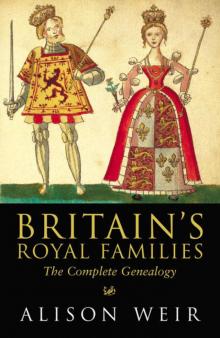 Britain's Royal Families: The Complete Genealogy
Britain's Royal Families: The Complete Genealogy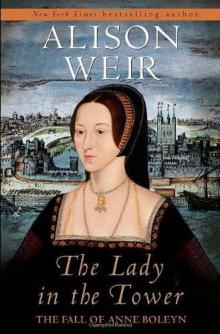 The Lady in the Tower: The Fall of Anne Boleyn
The Lady in the Tower: The Fall of Anne Boleyn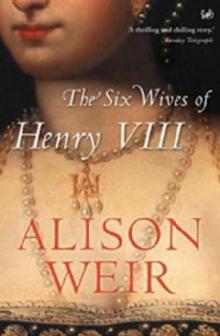 Six Wives of Henry VIII
Six Wives of Henry VIII Elizabeth of York: A Tudor Queen and Her World
Elizabeth of York: A Tudor Queen and Her World Captive Queen
Captive Queen Innocent Traitor
Innocent Traitor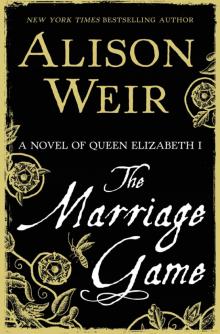 The Marriage Game
The Marriage Game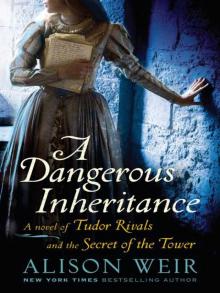 A Dangerous Inheritance
A Dangerous Inheritance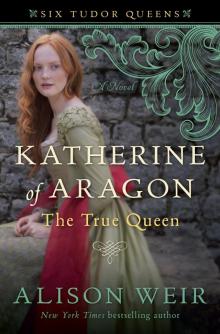 Katherine of Aragón: The True Queen
Katherine of Aragón: The True Queen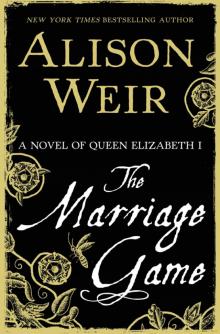 The Marriage Game: A Novel of Queen Elizabeth I
The Marriage Game: A Novel of Queen Elizabeth I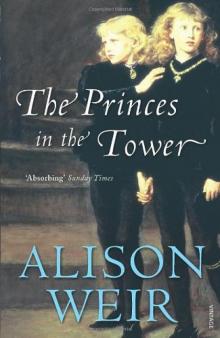 Princes in the Tower
Princes in the Tower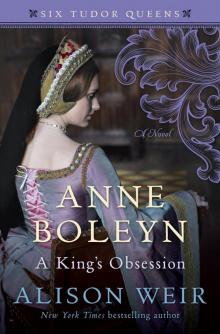 Anne Boleyn: A King's Obsession
Anne Boleyn: A King's Obsession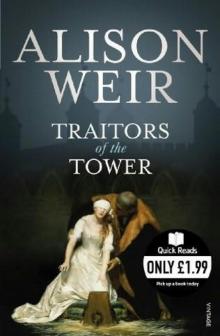 Traitors of the Tower
Traitors of the Tower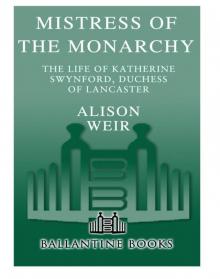 Mistress of the Monarchy: The Life of Katherine Swynford, Duchess of Lancaster
Mistress of the Monarchy: The Life of Katherine Swynford, Duchess of Lancaster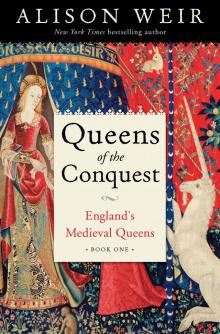 Queens of the Conquest: England’s Medieval Queens
Queens of the Conquest: England’s Medieval Queens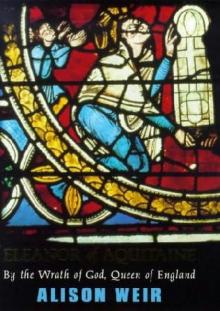 Eleanor of Aquitaine: A Life
Eleanor of Aquitaine: A Life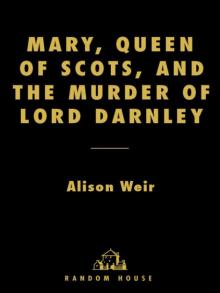 Mary, Queen of Scots, and the Murder of Lord Darnley
Mary, Queen of Scots, and the Murder of Lord Darnley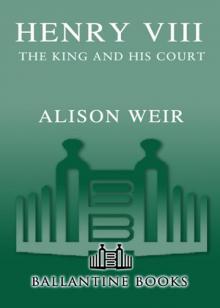 Henry VIII: The King and His Court
Henry VIII: The King and His Court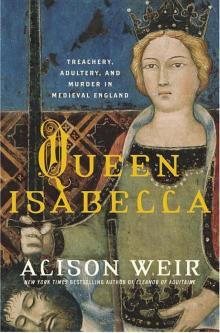 Queen Isabella: Treachery, Adultery, and Murder in Medieval England
Queen Isabella: Treachery, Adultery, and Murder in Medieval England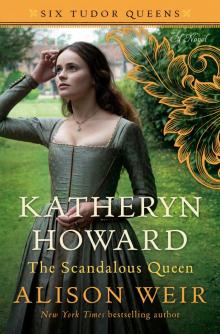 Katheryn Howard, the Scandalous Queen
Katheryn Howard, the Scandalous Queen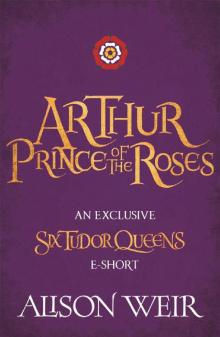 Arthur- Prince of the Roses
Arthur- Prince of the Roses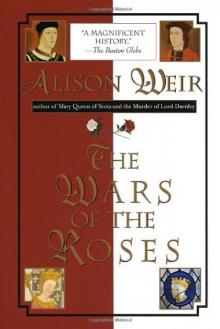 The Wars of the Roses
The Wars of the Roses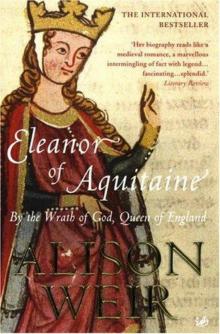 Eleanor of Aquitaine: By the Wrath of God, Queen of England
Eleanor of Aquitaine: By the Wrath of God, Queen of England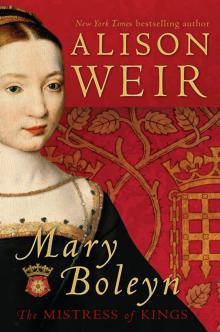 Mary Boleyn: The Great and Infamous Whore
Mary Boleyn: The Great and Infamous Whore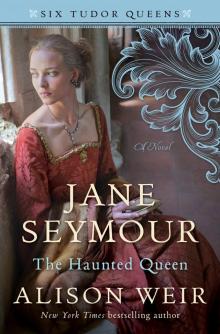 Jane Seymour: The Haunted Queen
Jane Seymour: The Haunted Queen Anna of Kleve, the Princess in the Portrait
Anna of Kleve, the Princess in the Portrait Lancaster and York: The Wars of the Roses
Lancaster and York: The Wars of the Roses The Grandmother's Tale
The Grandmother's Tale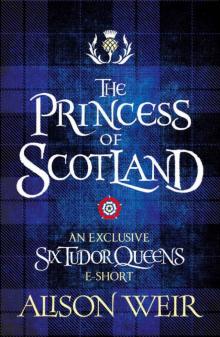 The Princess of Scotland (Six Tudor Queens #5.5)
The Princess of Scotland (Six Tudor Queens #5.5)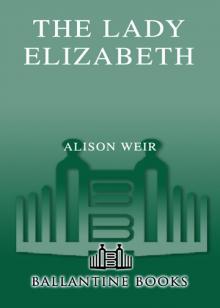 The Lady Elizabeth
The Lady Elizabeth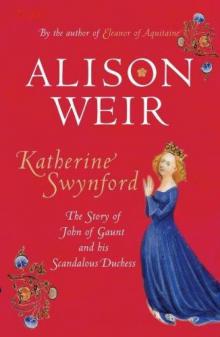 Katherine Swynford: The Story of John of Gaunt and His Scandalous Duchess
Katherine Swynford: The Story of John of Gaunt and His Scandalous Duchess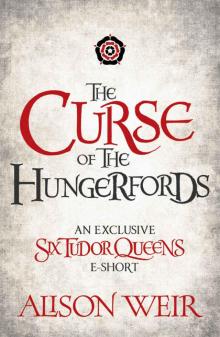 The Curse of the Hungerfords
The Curse of the Hungerfords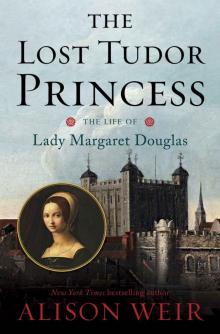 The Lost Tudor Princess: The Life of Lady Margaret Douglas
The Lost Tudor Princess: The Life of Lady Margaret Douglas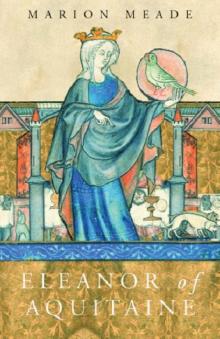 Eleanor of Aquitaine
Eleanor of Aquitaine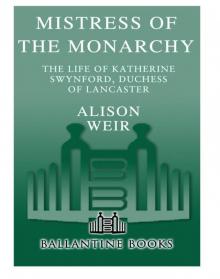 Mistress of the Monarchy
Mistress of the Monarchy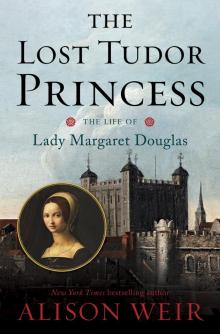 The Lost Tudor Princess
The Lost Tudor Princess Henry VIII
Henry VIII Anne Boleyn, a King's Obsession
Anne Boleyn, a King's Obsession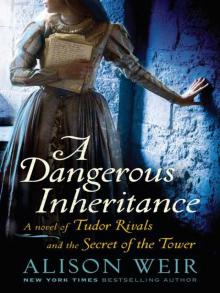 A Dangerous Inheritance: A Novel of Tudor Rivals and the Secret of the Tower
A Dangerous Inheritance: A Novel of Tudor Rivals and the Secret of the Tower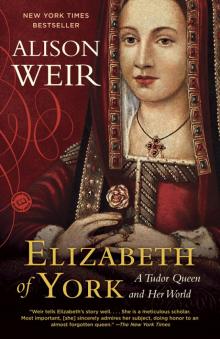 Elizabeth of York
Elizabeth of York Katherine of Aragon, the True Queen
Katherine of Aragon, the True Queen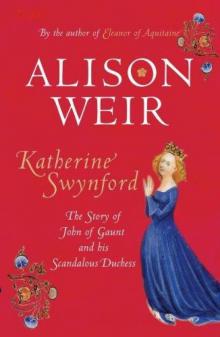 Katherine Swynford
Katherine Swynford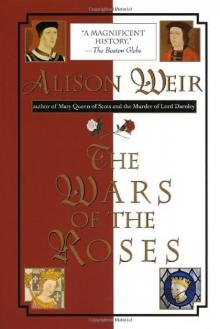 Wars of the Roses
Wars of the Roses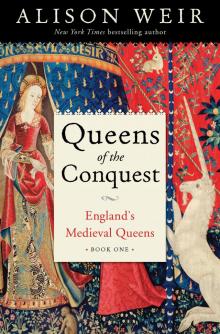 Queens of the Conquest
Queens of the Conquest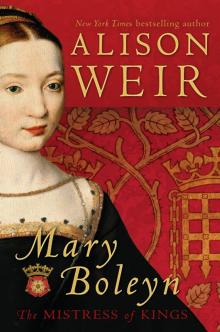 Mary Boleyn
Mary Boleyn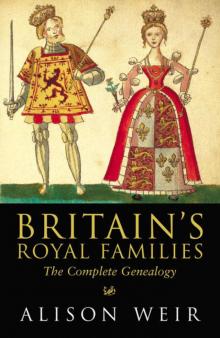 Britain's Royal Families
Britain's Royal Families The Tower Is Full of Ghosts Today
The Tower Is Full of Ghosts Today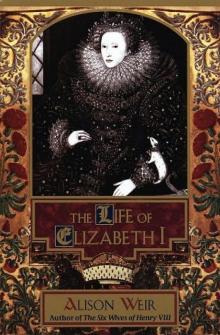 Life of Elizabeth I
Life of Elizabeth I Anne Boleyn A King's Obssession
Anne Boleyn A King's Obssession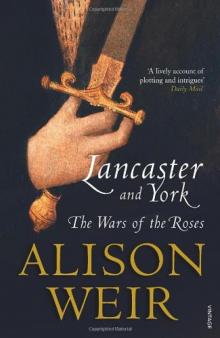 Lancaster and York
Lancaster and York Jane Seymour, the Haunted Queen
Jane Seymour, the Haunted Queen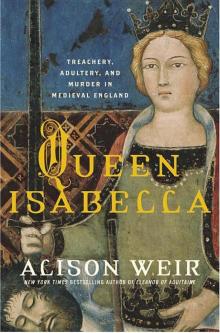 Queen Isabella
Queen Isabella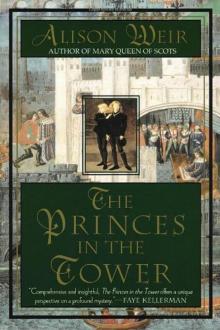 The princes in the tower
The princes in the tower